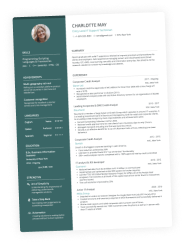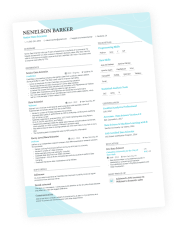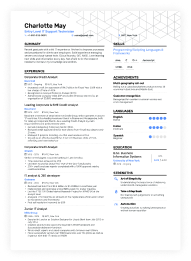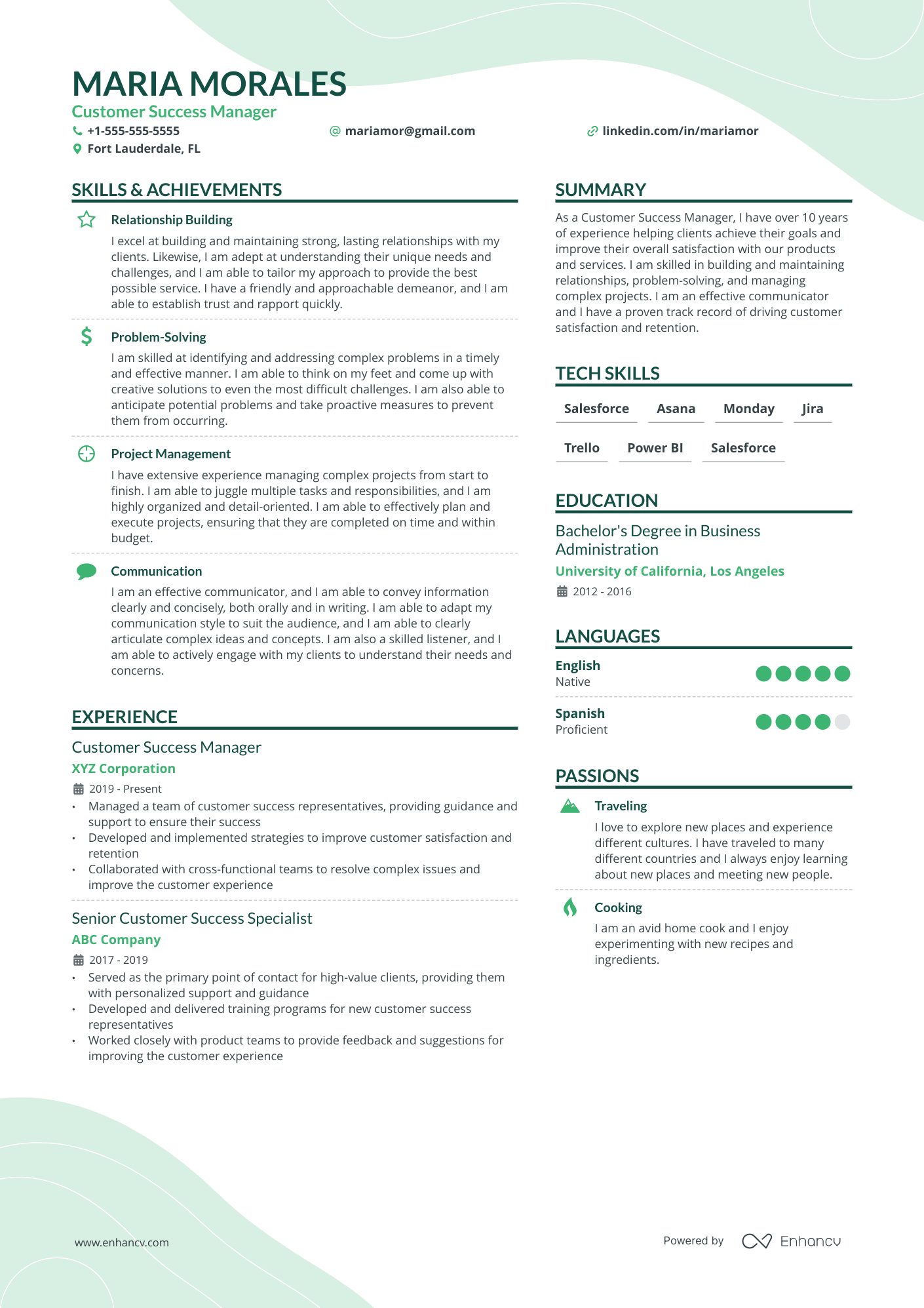Your resume tells your story. But how you sequence that story—especially your work experience—can dramatically affect how it's received. Whether you're a recent graduate, a seasoned pro, or navigating a career pivot, your job order on a resume needs to reflect your current goals, not just your past.
So, how should you order jobs on a resume? Let’s unpack your options.
Key takeaways
- Choose a resume format that reflects your career stage, goals, and the job you're targeting.
- Reverse chronological order is best for showing steady growth and traditional career paths.
- Functional and combination formats are ideal for career changers or those with varied experiences.
- Your job history order affects what recruiters notice first—make it count.
- Always tailor your resume’s structure to highlight relevance, not just chronology.
Before diving into formats, let’s understand why the way you arrange your job history can make or break that crucial first impression.
Why job order matters on a resume
First impressions count. Recruiters spend only a few seconds scanning each resume, and they typically start at the top of your work history section.
The order you choose:
- Shapes your narrative: Are you emphasizing steady growth? Versatility? A fresh start?
- Controls visibility: The top jobs get the most attention.
- Supports your strategy: Different industries and roles prioritize different things—showing you understand that can set you apart.
Is your resume good enough?
Drop your resume here or choose a file. PDF & DOCX only. Max 2MB file size.
The 3 main resume formats (and how they affect job order)
Each of the three main formats influences the order of job experience on your resume and affects how your job history is perceived at a glance.
1. Reverse chronological resume
This is the classic and most widely accepted structure. It presents your most recent job first, working backward.
Best for:
- Traditional career paths
- Steady work history
- Roles in industries such as finance, tech, business, and healthcare
Job order:
- Start with your latest job.
- Proceed backward through your career.
- Leave off anything outdated or irrelevant.
PRO TIP
If you had multiple jobs at one company, group them under the company name and list promotions separately.
Take a look at this extract from the resume of a medical professional applying for a nursing position.
Reverse chronological format work experience example
- •Provide critical care to an average of 30+ patients per shift in a high-volume ER.
- •Lead triage team in assessing and prioritizing patient needs, resulting in a 15% improvement in ER wait time benchmarks.
- •Collaborate with physicians, respiratory therapists, and social workers to coordinate care plans.
- •Trained and mentored 10+ new hires through the hospital’s preceptor program.
- •Delivered post-operative and general care for patients recovering from surgeries and acute conditions.
- •Charted vitals, administered medications, and educated patients and families on discharge instructions.
- •Led a quality improvement initiative that reduced medication errors by 22%.
- •Acted as charge nurse on a rotating basis, overseeing staffing and operations.
Take a look at a standard resume that uses the reverse chronological format:
But what if your career hasn’t followed a straight line? That’s where the functional resume format comes in.
2. Functional (skills-based) resume
This format organizes your application by skill category rather than the chronological order of jobs on your resume, helping highlight transferable strengths over a timeline.
Best for:
- Career changers
- Freelancers
- People with gaps in employment
Job order:
- Display transferable skills first.
- Include a short “Work History” section at the bottom, optionally omitting dates.
PRO TIP
Tailor each skill section to the job description using action verbs and measurable outcomes.
Below, we analyze a resume from a freelancer trying for a graphic design position.
Functional resume format work experience example
Skills & achievements
Visual Design & Branding
- Designed logos, style guides, and visual assets for over 40 small businesses and startups, helping clients establish consistent and memorable brand identities.
- Rebranded a boutique fashion label, increasing brand engagement by 35% across social platforms within six months.
- Created multi-platform design systems that aligned digital, print, and merchandise assets across 12 product lines.
Web & Digital Design
- Developed responsive website layouts using Adobe XD, Figma, and Webflow for clients in tech, hospitality, and e-commerce.
- Produced UI elements and icon sets used in mobile app prototypes, contributing to successful MVP launches.
- Collaborated with developers to ensure pixel-perfect translation of mockups into live products.
Client Communication & Project Management
- Managed project timelines, deliverables, and client revisions independently using Trello and Asana.
- Delivered 95% of projects on time and within budget while juggling multiple client relationships.
- Wrote creative briefs and presented design concepts to stakeholders with varying technical backgrounds.
Then this would be followed up by a concise work history, giving priority to jobs that have the most relevance.
Here’s a full, editable resume example:
Now that you’ve seen how the functional format can elevate skills, let’s look at what happens when you blend that with a timeline—the combination resume.
3. Combination (hybrid) resume
This hybrid approach blends skill highlights with a traditional reverse job history order on a resume to convey both capability and consistency.
Best for:
- Professionals with solid experience and varied skills
- Job seekers targeting leadership roles
- Applicants in creative or tech industries
Job order:
- Start with a summary of qualifications or key skills.
- Follow with traditional work history.
PRO TIP
Use the combination format if you’re transitioning industries but want to keep your career timeline intact.
Let’s take a look at a marketing professional seeking a director-level position.
Combination resume format work experience example
Skills & achievements
Strategic Leadership
- Spearheaded cross-functional teams of up to 25 members across marketing, design, and analytics departments.
- Developed and implemented marketing strategies that increased brand awareness by 40% year-over-year.
- Mentored five junior managers into senior roles within two years by creating internal leadership training frameworks.
Growth Marketing & Campaign Strategy
- Launched integrated campaigns across SEO, email, social, and paid media that drove a 120% lift in lead generation.
- Revamped the company’s content strategy, resulting in a 300% increase in organic web traffic in 18 months.
- Led rebranding initiatives during two company acquisitions, preserving customer loyalty and brand continuity.
Data-Driven Decision Making
- Introduced real-time analytics dashboards using Looker and GA4, leading to faster campaign pivots and improved ROI.
- Reduced customer acquisition cost (CAC) by 35% through precise audience segmentation and A/B testing.
- Partnered with finance to align campaign KPIs with broader business goals, improving cross-department transparency.
This leads to the actual job history in chronological order.
- •Delivered 3 consecutive years of double-digit revenue growth through targeted B2B campaigns.
- •Created quarterly planning processes adopted company-wide as part of leadership’s strategic roadmap.
- •Increased customer retention by 22% by launching a behavior-driven email automation system.
- •Built a cross-functional onboarding flow that improved time-to-value for new customers by 45%.
- •Produced weekly thought-leadership content that positioned the company as an early category leader.
- •Promoted twice in under 18 months due to initiative and high performance.
Here’s a resume example to give you a clearer picture:
You’ve seen how each format works—now let’s figure out which one aligns best with your background and career goals.
How to choose the right job order for your resume
Determining how to order job experience on a resume depends on your career stage, goals, and the expectations of your target industry.
If your path hasn’t been linear—or you’re feeling unsure how to “package” it—don’t worry. Many professionals face the same question. What matters most is showing how your experience aligns with your next step.
Consider your career stage
- Early career: Use a hybrid or functional format if you lack full-time experience. Focus on internships, volunteer work, and academic projects.
- Mid-level: Reverse chronological is usually best—recruiters want to see consistent growth.
- Late career/Execs: Combination format lets you lead with leadership chops while preserving a rich career history.
Think About the Industry
| Tech & IT | Combination | Resume skills and technical achievements matter just as much as job progression. |
|---|---|---|
| Education | Reverse Chronological | Steady career growth, tenure, and certifications on a resume are highly valued. |
| Marketing & Creative | Functional or Combination | Employers prioritize portfolios, versatility, and campaign-specific outcomes. |
| Finance & Legal | Reverse Chronological | Traditional fields value a stable, linear career trajectory. |
| Freelancing / Consulting | Functional | Demonstrating skill versatility and project experience trumps a fixed timeline. |
| Healthcare | Reverse Chronological | Licensing, continuity of care, and clear role progression are key. |
| Sales | Combination | Skills like >negotiation and results (e.g., quotas met) should be emphasized. |
| Human Resources | Reverse Chronological | Employers look for a strong, evolving HR career history. |
| Nonprofit / NGO | Combination | Highlighting passion projects and transferable skills is just as important. |
| Engineering (Civil/Mechanical) | Reverse Chronological | Demonstrates technical depth and project leadership over time. |
| Government & Public Sector | Reverse Chronological | Formal experience and job titles in sequence matter greatly. |
| Media & Journalism | Combination | A mix of published work and role progression is expected. |
| Startups / Entrepreneurship | Functional or Combination | Need to spotlight impact and adaptability over formal titles or dates. |
| Hospitality & Tourism | Reverse Chronological | A clear timeline of roles and service experience is valued. |
| Real Estate | Combination | Emphasis on client wins, transactions, and networking across roles. |
PRO TIP
Job seekers should review job ads in their industry to identify recurring themes—skills, certifications, achievements—and choose a format that puts those front and center.
Once you’ve chosen your ideal format, it’s time to fine-tune how you present each role and responsibility.
Additional tips for structuring work experience
Besides the advice we give above, here are a few more things we strongly recommend considering:
⇨ Use bullet points, not paragraphs
Quick scan = quick hire. Keep each bullet under two lines and start with a powerful verb.
⇨ Remove irrelevant or outdated roles
Unless you're applying for a role that values 20 years of experience, trim your list to the last 10–15 years.
Numbers catch eyes. Instead of “Managed a team,” write “Managed a 10-person team across 3 departments.”
Most people would write a résumé like this: ‘Wrote editorials for The New York Times.’ Better would be to say: ‘Had 50 op-eds published compared to an average of 6 by most op-ed writers as a result of providing deep insight into the following area for three years.’
Laszlo Bock, former Senior Vice President of People Operations at Google
At this point, you’ve got the tools and examples—so let’s recap the most important takeaway when deciding the order of jobs on your resume.
Conclusion
There’s no one-size-fits-all solution for how to list work experience on a resume. The right approach depends on your career narrative, target industry, and the order of jobs that best supports your next step.
Ready to tell your story with impact? Enhancv’s drag-and-drop Resume Builder helps you structure your experience with purpose—so you don’t just list jobs, you show who you are.
Make one that's truly you.





